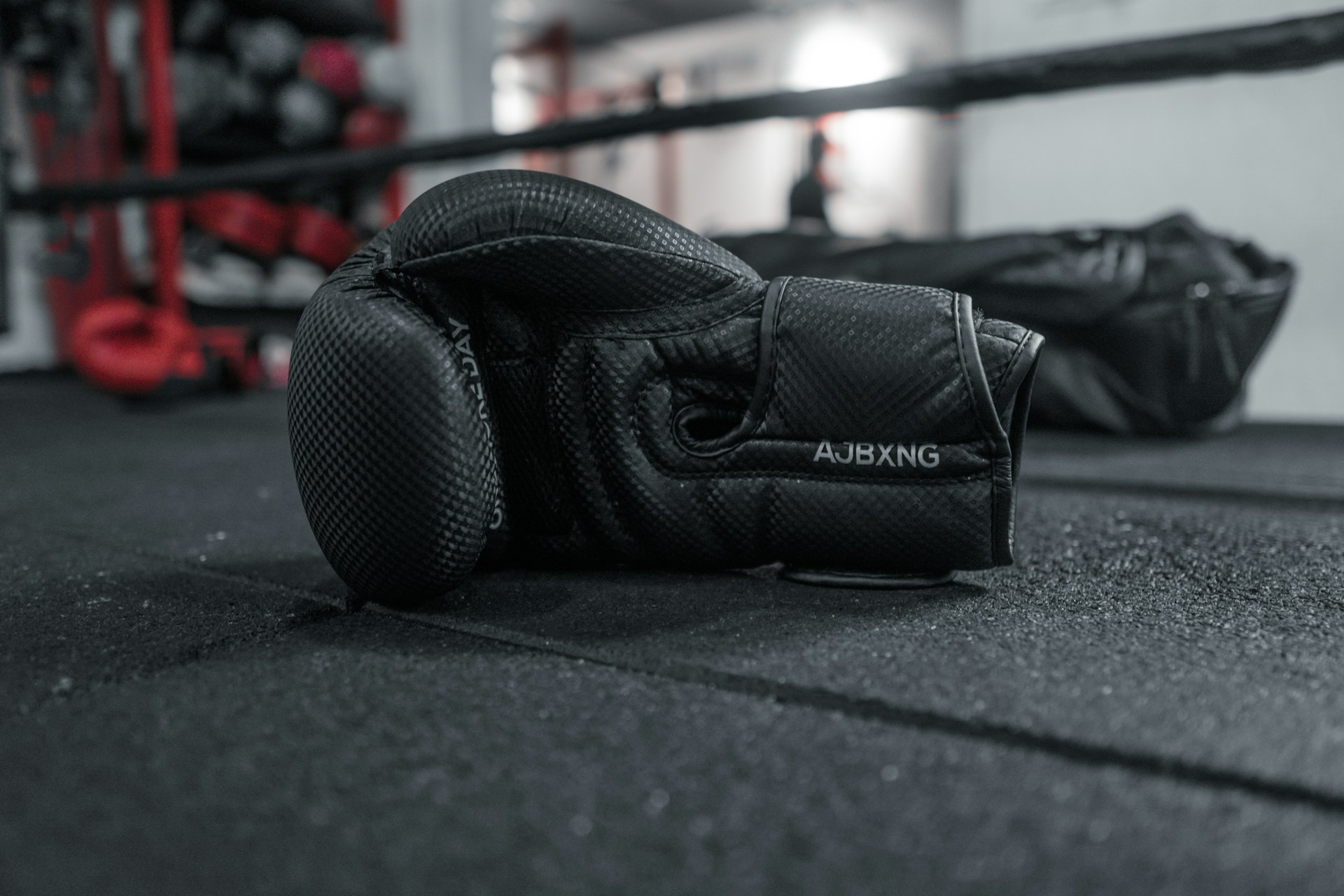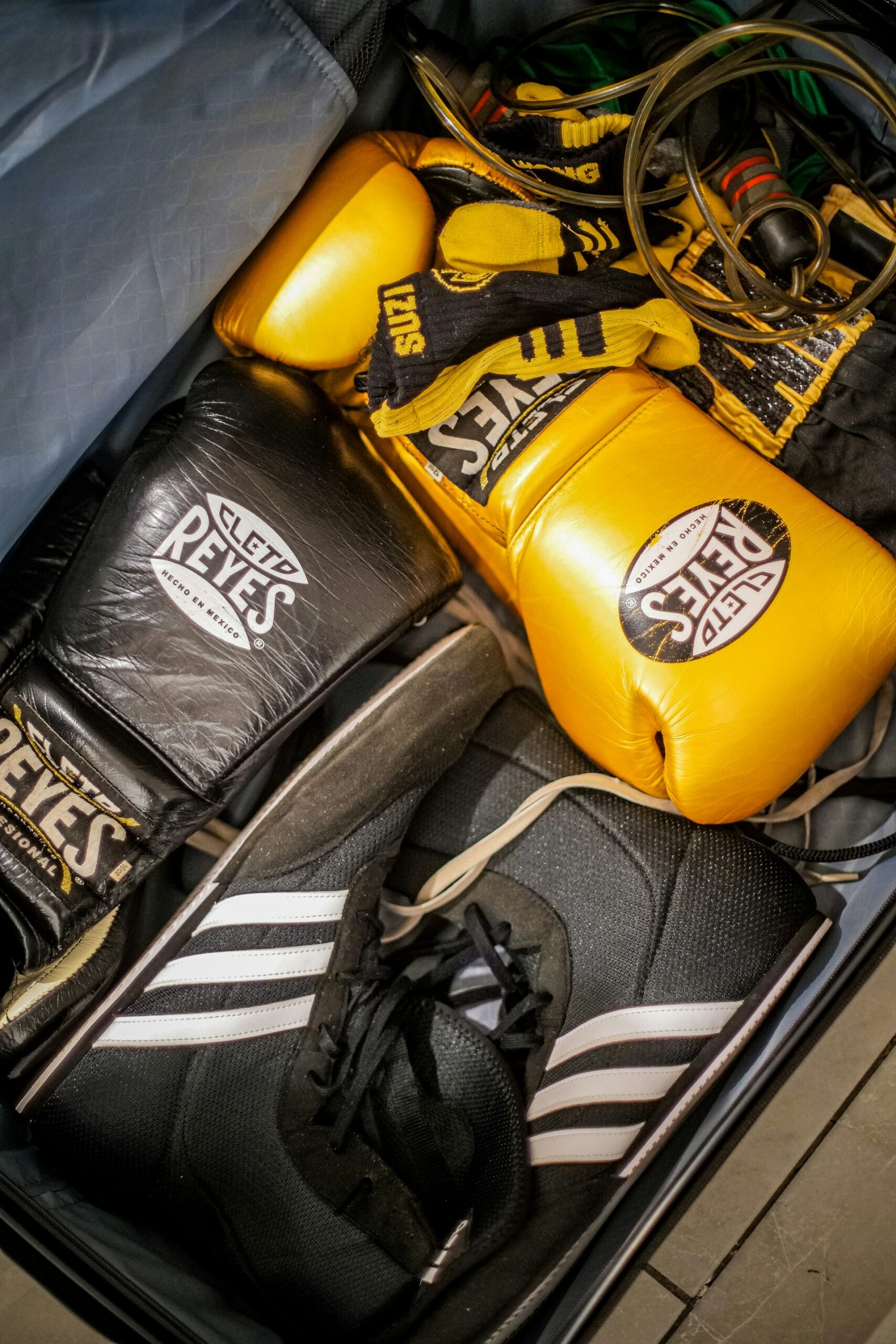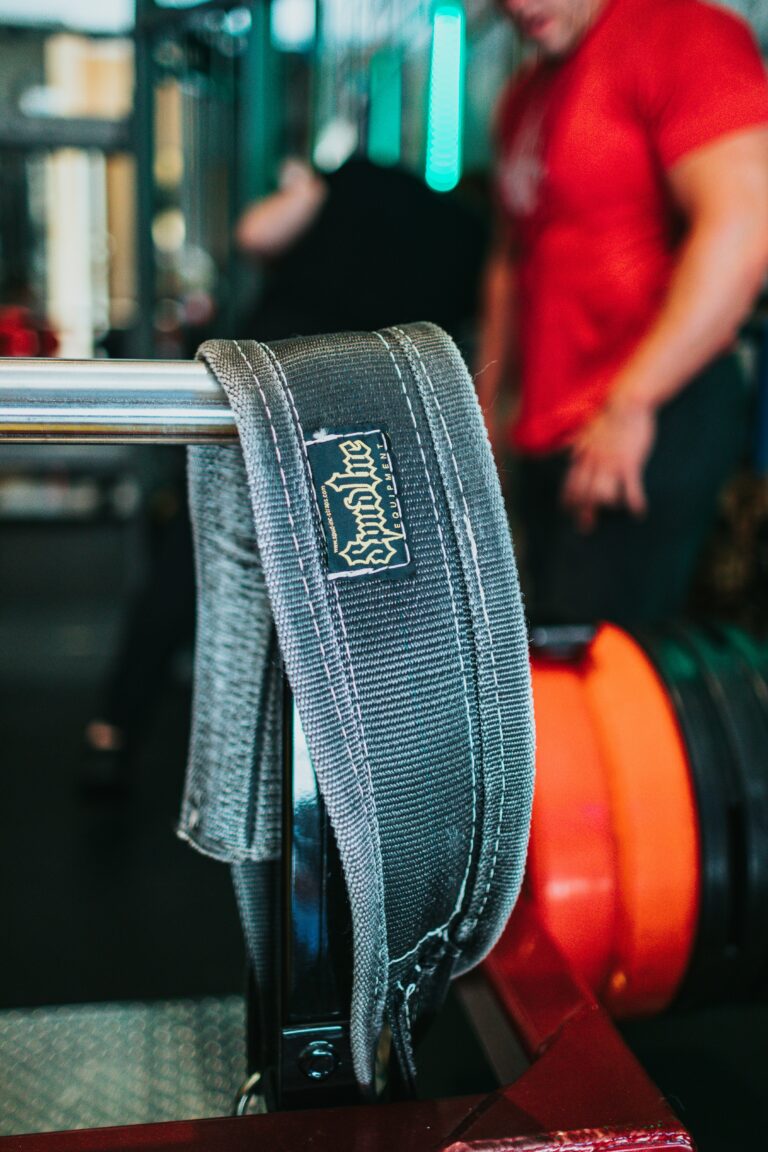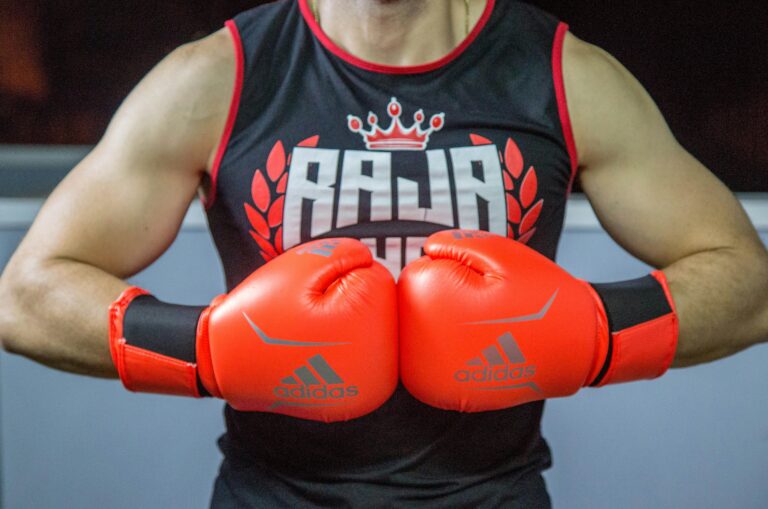Whether you’re stepping into a boxing ring for the first time or transitioning from boxing to kickboxing, having the right equipment is crucial for both performance and safety. The martial arts world demands specific gear that protects you during training and competition while allowing you to develop proper technique. This guide breaks down the essential kit every boxer and kickboxer needs to train effectively and safely.
Hand Protection: Your First Priority

Hand wraps form the foundation of any striking martial artist’s kit. These long strips of fabric, typically 180 inches for adults, wrap around your hands, wrists, and knuckles to provide compression and support. They stabilize the small bones in your hands and help prevent injuries like boxer’s fractures. Many beginners underestimate their importance, but experienced fighters never skip this step. You’ll need at least two pairs so you can wash one set while using the other.
Boxing gloves are your primary investment and come in various weights, typically ranging from 8oz to 16oz. Heavier gloves offer more padding and are standard for sparring, while lighter gloves are used in competition. For training purposes, most gyms recommend 14oz or 16oz gloves as they provide adequate protection for both you and your training partners. Look for gloves with good wrist support and quality padding around the knuckles. Leather gloves last longer than synthetic options, though they require a higher initial investment.
Protective Equipment: Safety First
A quality mouthguard is non-negotiable for anyone involved in sparring or competition. Custom-fitted mouthguards from your dentist offer the best protection and comfort, but boil-and-bite mouthguards provide a more affordable alternative that still offers decent protection for your teeth and jaw. Never compromise on this piece of equipment—dental work is far more expensive than even the best mouthguard.
Headgear becomes essential once you begin sparring. While there’s ongoing debate about headgear in competition, it’s standard in most training environments. Good headgear should provide padding across your forehead, temples, and cheeks while not obstructing your vision. Ensure it fits snugly without being uncomfortable, as loose headgear can shift during sparring and actually increase injury risk.
For kickboxing specifically, shin guards are absolutely essential. These protect both your shins when you kick and your training partner when they check your kicks. Look for shin guards that cover from just below your knee to the top of your foot, with secure straps that keep them in position during rapid movement. Foam or gel padding works well for training purposes.
Groin protection is mandatory for male fighters and advisable for female fighters. This is another area where you shouldn’t cut corners—a solid cup with a secure support system can mean the difference between walking away from an accidental low blow and ending your training session early in considerable pain.
Footwear and Apparel
Footwear choices differ between boxing and kickboxing. Boxing typically uses lightweight boxing boots that provide ankle support and allow you to pivot smoothly on the balls of your feet. These boots help maintain proper stance and footwork while offering some ankle stability.
Kickboxing training often happens barefoot or in specialized martial arts shoes, depending on your gym’s rules and whether you’re training for competition or fitness. If you’re doing serious kickboxing training, building up your feet naturally through barefoot training helps develop stronger ankles and better feel for your techniques. However, martial arts shoes can provide grip and some protection during the learning phase.
Your training attire should be comfortable and allow full range of motion. Shorts should be lightweight and cut to allow high kicks in kickboxing. Many fighters prefer compression wear underneath their shorts for support. Choose moisture-wicking fabrics that keep you dry during intense training sessions. Avoid clothing with zippers, buttons, or anything that could catch or scratch your training partners.
Training Aids and Accessories
While not always essential for beginners, several accessories enhance your training as you progress and can make the difference between good and great preparation. A gym bag designed for martial arts equipment helps organize and transport your gear while allowing sweaty items to air out. Look for bags with ventilated compartments to prevent your gloves from developing unpleasant odors. Some bags feature separate shoe compartments and wet/dry sections, which are particularly useful for keeping clean wraps away from used equipment.
Focus mitts and Thai pads are valuable training tools if you’re working with a partner or coach outside of regular class times. Focus mitts are smaller, handheld pads perfect for boxing combinations and developing hand speed. Thai pads are larger, rectangular pads designed to absorb the impact of kicks as well as punches, making them essential for kickboxing training. These allow for dynamic pad work that develops timing, accuracy, and power while simulating realistic striking scenarios. However, these are typically provided by gyms, so only invest in your own if you’re training independently or want specific brands and styles.
A jump rope is an inexpensive but invaluable tool for any striking martial artist. It develops footwork, timing, coordination, and cardiovascular endurance—all crucial attributes for combat sports. Professional fighters incorporate rope work into nearly every training session, often spending fifteen to thirty minutes on various rope techniques. Speed ropes with ball-bearing handles allow for faster rotations and more advanced techniques like double-unders.
Hand protection spray or glove dogs are small products that make a big difference in equipment longevity. These cedar or bamboo inserts absorb moisture from inside your gloves between training sessions, preventing bacterial growth and the notorious gym glove smell that can develop over time. They’re a small investment that protects a larger one.
A heavy bag for home training can be transformative if you have the space and proper mounting. Free-standing bags offer convenience without ceiling installation, while traditional hanging bags provide more realistic feedback. For kickboxing, ensure your bag is long enough to practice low kicks effectively—a six-foot bag is ideal. Pair it with bag gloves, which are more compact than training gloves and designed specifically for solo bag work.
Timer apps or interval timers help structure your training sessions with proper round timing. Most boxing and kickboxing training follows three-minute rounds with one-minute rest periods, and dedicated timers remove the guesswork. Many fighters also use heart rate monitors to track their conditioning improvements and ensure they’re training in optimal zones for their goals.
Resistance bands provide an excellent way to strengthen the specific muscles used in striking. They’re portable, affordable, and allow you to practice punch resistance training that builds speed and power. Many fighters incorporate band work into their warm-up routines to activate their shoulders and core before hitting the bags or pads.
Maintenance and Hygiene
Taking care of your equipment extends its life significantly and keeps it hygienic, which is crucial in combat sports where you’re in close contact with training partners. Your maintenance routine should begin immediately after each training session. Always air out your gloves after training—never leave them in your bag where moisture gets trapped and bacteria thrive. Stand them up or hang them in a well-ventilated area, opening the wrist straps fully to maximize airflow. Some fighters stuff newspaper inside their gloves to absorb excess moisture, though specialized glove deodorizers or cedar chips offer a more effective long-term solution.
Glove deodorizers come in various forms, from bamboo charcoal bags to cedar inserts, and they actively absorb moisture while combating odor-causing bacteria. These should be inserted immediately after training and left in until your next session. For gloves that have already developed an odor, antibacterial sprays designed for sports equipment can help reset them, though prevention is always better than cure. Spray the interior of your gloves, shin guards, and headgear after particularly intense sessions.
Hand wraps require washing after every single use without exception. They absorb enormous amounts of sweat and become breeding grounds for bacteria if left unwashed. Most fighters have multiple pairs in rotation—use one pair while the other dries. Wash them in a mesh laundry bag to prevent tangling, using regular detergent and warm water. Some fighters add a bit of white vinegar to the wash for extra antibacterial action. Air dry them completely before storing to prevent mildew.
Shin guards and headgear need regular attention too. Wipe them down with antibacterial wipes or spray after each session, paying special attention to areas that contact your skin directly. Many shin guards have removable liners that can be washed separately—take advantage of this feature. For headgear, check the padding regularly for compression or damage, as worn padding provides inadequate protection.
Your mouthguard should be rinsed with cool water immediately after use and stored in its ventilated case. Never use hot water, as it can warp the material. Once weekly, clean it thoroughly with toothpaste or denture cleaner to prevent bacterial buildup. Replace your mouthguard if you notice any cracks, tears, or if it no longer fits snugly—a loose mouthguard offers little protection.
Equipment replacement schedules depend on usage frequency, but general guidelines help maintain safety standards. Training gloves typically last one to three years with regular use. Signs that it’s time to replace them include compressed padding that no longer springs back, tears in the outer material, or compromised wrist support. If you can feel the impact of punches more than you used to, your padding has likely degraded beyond safe use.
Shin guards should be replaced when the padding becomes permanently compressed or if the straps no longer secure them properly. Loose shin guards shift during training and can actually cause injuries rather than prevent them. Hand wraps last through dozens of washes but should be replaced when the elastic loses its stretch or the fabric becomes thin and frayed—usually every six to twelve months with regular use.
Create a regular inspection routine, checking all your equipment weekly for signs of wear. Small issues like loose stitching on gloves can be repaired early before they become major problems. Keep a small repair kit with super glue and athletic tape for minor fixes.
Storage matters as much as cleaning. Never store equipment while still damp, and avoid leaving gear in hot cars where heat accelerates material breakdown. A dedicated storage area with good air circulation keeps everything fresh and extends lifespan. Some fighters use garment bags or hanging organizers to keep gloves and shin guards separated and aired out between sessions.
Final Thoughts
Investing in quality equipment from the start saves money in the long run and, more importantly, protects you from injury. While the initial outlay for proper boxing or kickboxing kit might seem substantial, this equipment will last for years with proper care. Start with the essentials—hand wraps, gloves, mouthguard, and appropriate protective gear—then add accessories as your training progresses. Remember that your gym may provide some equipment for beginners, so check before purchasing everything at once. With the right kit, you’ll train safely and effectively as you develop your skills in these demanding but rewarding martial arts.



